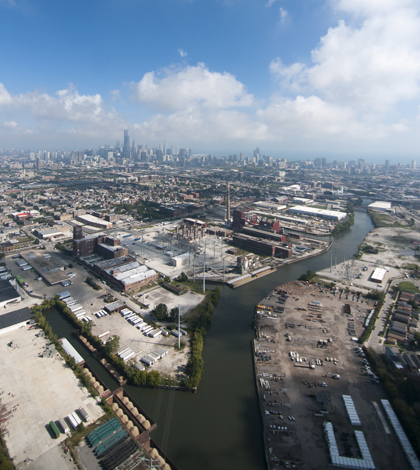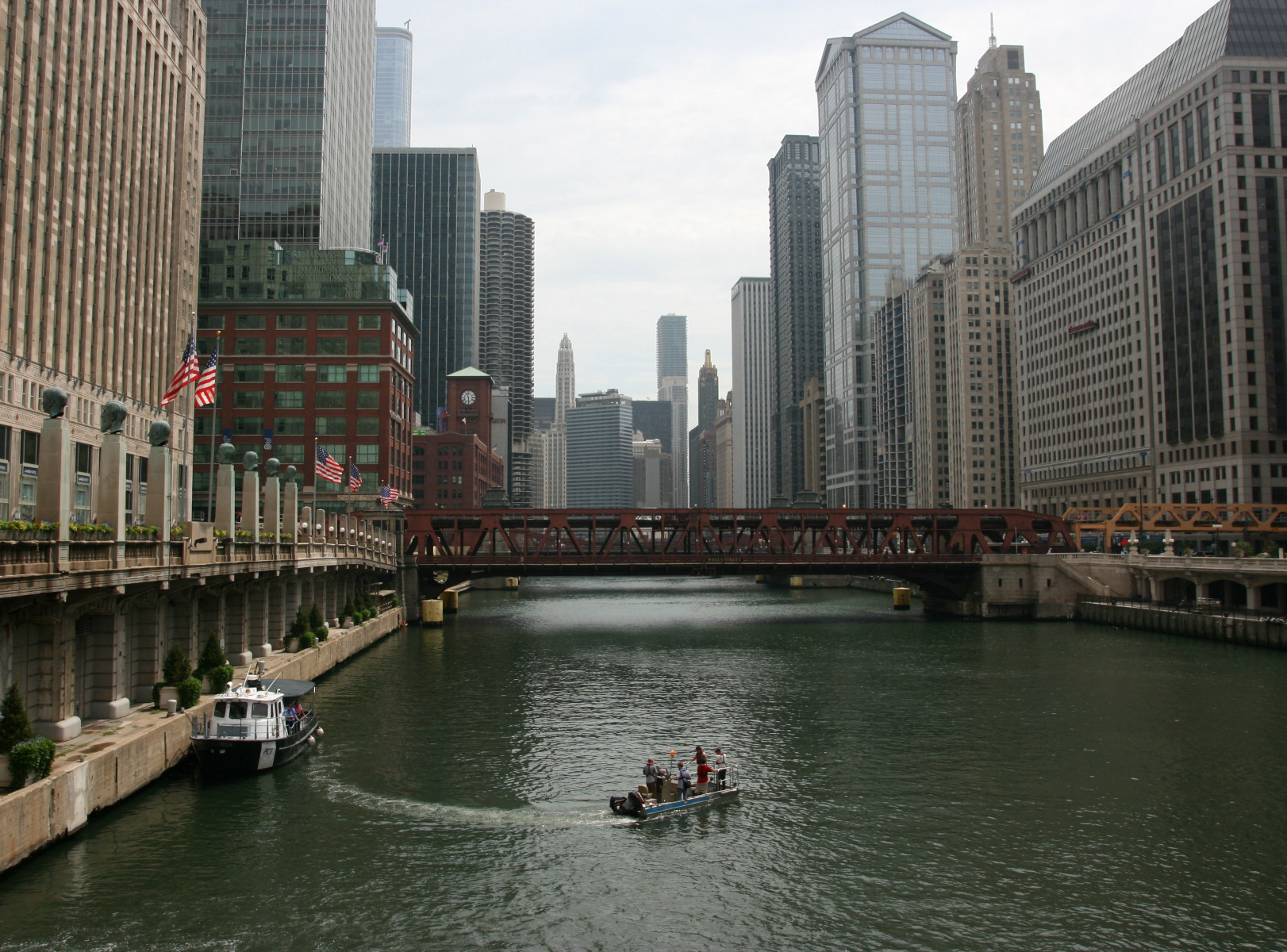Study of Chicago River microbes will track benefits of regional sewer upgrades

(Credit: Metropolitan Water Reclamation District of Greater Chicago)
An ambitious plan is underway to transform the Chicago River—essentially an open sewer engineered to carry waste away from Lake Michigan—into a destination where people can fish, paddle and play without fear of infection by harmful microbes.
To see if the plan works, federal researchers are helping the city’s sewer utility study how microbial communities in the waterway change as the city overhauls its wastewater system.
Scientists from the U.S. Department of Energy’s Argonne National Laboratory have begun a seven-year project that involves analyzing microbes found in local water samples. The researchers are piggy-backing on routine sampling done by the Metropolitan Water Reclamation District of Greater Chicago, or MWRD, during the March-to-November recreational season.
“What we’re going to do is extract the DNA from the samples, and with the computational power we have, sequence the genomes of the microbes,” said Cristina Negri, an Argonne agronomist and project manager for the study. Comparing their findings with existing DNA libraries, the scientists can learn where the microbes originated.
The team also plans to create a hydrological model of the Chicago River system to better understand how microbes move throughout the waterway and how heavy rain events alter its microbial community, Negri said. That could help improve forecasting to warn residents of likely spikes in dangerous bacteria.
Chicago is the only major U.S. city that does not disinfect the effluent from its wastewater treatment plants to kill germs. The prevailing logic was that no one would want to have contact with the heavily polluted river anyway.
But in 2011 the U.S. Environmental Protection Agency ordered that portions of the Chicago River and connected waterways be made safe for swimming. To meet the new requirements, MWRD will begin disinfection at two of its treatment plants by 2016.
The city also is in the midst of the so-called Deep Tunnel project, a decades-long effort to capture stormwater in tunnels and reservoirs to reduce flooding and combined sewer overflows.
The seven-year study will show what happens to the microbial community as disinfection begins and new reservoirs are completed. But wastewater isn’t the only source of microbes in the river, Negri noted.
“Chicago has this history as the meat packing capital of the U.S., and there actually was an area of the river called Bubbly Creek, because that’s where all the carcasses and offal were thrown in the river,” she said. “It was bubbly because of the gases from decomposing waste. So there has to be some microbial activity over there.”

Biological sampling on the Chicago River (Credit: Metropolitan Water Reclamation District of Greater Chicago)
Agriculture, industry and waste from pets and wildlife also contribute microbes to the waterway, said Jack Gilbert, an Argonne environmental microbiologist involved in the study.
Gilbert said the study will go well beyond the microbial monitoring MWRD already does to comply with EPA regulations. That work involves adding water samples to agar plates to see if cultures of E. coli or other fecal indicator bacteria grow there.
“This culture-based assessment of disease-causing pathogens is the current standard,” he said. “We think that’s erroneous, primarily because many things don’t grow on these agar plates. Also they’re not investigating viruses, and we need to know what the source of those viruses is in the river system. Recently the microbial ecology community has developed techniques that allow mass screening of thousands and thousands of samples, and that allows us to paint a fundamentally comprehensive picture.”
Argonne scientists are tapping into the sampling the district already does through its ambient water quality monitoring program. MWRD scientists use surface grab sampling at 28 sites on 13 waterways and analyze the water not only for fecal indicator bacteria, but also for alkalinity, turbidity, dissolved metals, fats, radiochemistry and several other parameters.

A MWRD pollution control technician collecting a dissolved oxygen sample from the patrol boat. (Credit: Metropolitan Water Reclamation District of Greater Chicago)
The ambient water quality program is part of MWRD’s broader monitoring of waterways in its service area. The district also conducts continuous dissolved oxygen monitoring in the Chicago, Calumet and Des Plaines rivers with 18 monitoring stations—both in shipping channels and shallow streams—that are mounted on bridge abutments and encased in stainless steel for protection. The stations take hourly measurements of dissolved oxygen, temperature and specific conductivity.
It also recently completed a study with university researchers of endocrine disruptors—synthetic chemicals that mimic hormones and may disrupt the body’s normal functions—in the effluent from local wastewater treatment plants. The study found that endocrine disruptors were present throughout local waterways but did not appear to immediately harm fish.
While the project’s primary goal is measuring the success of MWRD’s upgrades, it’s also a chance to seek answers to fundamental questions about how microbes interact in the environment, Gilbert said.
“The most interesting thing from my perspective is that when a pathogen enters a natural ecosystem, it finds itself interacting with new organisms it’s never encountered before,” he said. “It finds itself in this light, cold and totally aerobic environment. If that doesn’t kill it, it has the opportunity to start competing against these natural bacteria. We want to know what that interaction does to those organisms. Do they become more pathogenic? Less pathogenic? Shockingly, we know very little about that, primarily because we haven’t had the tools to do it.”
It may have taken Chicago officials a long time to see their waterways as much more than channels for moving ships and waste, but Gilbert said MWRD’s partnership with Argonne is evidence that the city is awakening to the Chicago River’s potential as a recreation asset.
“It’s remarkable to see a public body taking such a far-sighted perspective of their system,” he said. “They’re investing in the future by allowing us to investigate this microbial world. Nowhere else in the world is this being done.”




0 comments